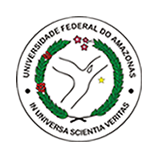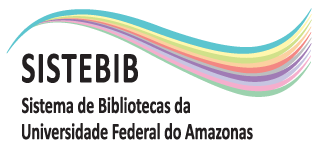| ???jsp.display-item.social.title??? |


|
Please use this identifier to cite or link to this item:
https://tede.ufam.edu.br/handle/tede/11300Full metadata record
| DC Field | Value | Language |
|---|---|---|
| dc.creator | Costa, Anderson Silva da | - |
| dc.creator.Lattes | http://lattes.cnpq.br/0872299071061884 | eng |
| dc.contributor.advisor1 | Oliveira, Rita do Perpétuo Socorro Barbosa de | - |
| dc.contributor.advisor1Lattes | http://lattes.cnpq.br/2602637105704791 | eng |
| dc.contributor.referee1 | Nunes, Paulo Jorge Martins | - |
| dc.contributor.referee2 | Dantas, Priscila Vasques Castro | - |
| dc.date.issued | 2025-05-23 | - |
| dc.identifier.citation | COSTA, Anderson Silva da. A estética do ressentimento no universo de Arthur Engrácio. 2025. 99 f. Dissertação (Mestrado em Letras) - Universidade Federal do Amazonas, Manaus (AM), 2025. | eng |
| dc.identifier.uri | https://tede.ufam.edu.br/handle/tede/11300 | - |
| dc.description.resumo | O objeto desta dissertação é o estudo do conceito de “estética do ressentimento” na ficção de Arthur Engrácio havida nas obras Restinga (1976), Ajuste de contos (1978), Contos do mato (1981), Estórias do rio (1984), 20 contos amazônicos (1986), Outras histórias de submundo (1988) e A vingança do boto (1995) e no romance Áspero chão de santa Rita (1986), fundamentando-se nas relações de poder e sofrimento moral presentes nos seringais amazônicos entre o período de 1880 e 1910, auge do ciclo da borracha. O estudo teve como objetivo analisar, por meio dos contos do autor amazonense, as representações do ciclo da borracha, articuladas em três eixos centrais que exploram a transição do homem concebido por Arthur Engrácio, revelando os aspectos sociais e subjetivos de um período marcado pela opressão e resistência. No primeiro eixo, a pesquisa investiga a figura do homem subjugado, descrito como um trabalhador dos seringais submetido a uma lógica de poder extrativista, em que empregadores detinham o poder sobre a vida e a morte dos seringueiros. Este cenário é analisado à luz dos estudos de Euclides da Cunha (2021) destacando as relações de dominação e o sofrimento moral lidos a partir dos conceitos de poder soberano e vida nua de Giorgio Agamben (2010). No segundo eixo, o foco recai sobre o homem ressentido, nos termos propostos pela psicanalista Maria Rita Kehl (2004) cuja narrativa se constrói a partir de uma revolta contida, fruto de uma ruminação silenciosa que atravessa o homem engraciano. Esse sentimento opera tanto como motor da narrativa quanto como resposta ao sistema extrativista. Por fim, no terceiro eixo, a pesquisa aborda o homem revoltado, que rompe com a condição de submissão ao ultrapassar os limites do aceitável. Essa figura é representada pelo caboclo que abandona a passividade, pega em armas e desafia diretamente o opressor, movimento lido a partir, principalmente da ótica de Michel Foucault (1999) e o rompimento da sociedade disciplinar. O homem revoltado simboliza um protagonismo inédito, evidenciando uma virada na trajetória do personagem engraciano. A presente pesquisa adota uma abordagem qualitativa, de natureza bibliográfica, caracterizando-se pela obtenção de dados por meio de imersão em materiais escritos. A análise foi sustentada por um quadro teórico estruturado em três eixos previamente delineados, cada um abordando aspectos distintos e complementares da interseção entre literatura, história e psicanálise. A pesquisa evidencia a qualidade literária das obras do autor, ao ficcionalizar as relações históricas e sociais dos seringais amazônicos, trazendo à tona os dilemas morais e os desdobramentos do ressentimento no universo do homem ribeirinho. | eng |
| dc.description.abstract | The object of this dissertation is the study of the concept of the “aesthetics of resentment” in the fiction of Arthur Engrácio, as found in the works Restinga (1976), Ajuste de contos (1978), Contos do mato (1981), Estórias do rio (1984), 20 contos amazônicos (1986), Outras histórias de submundo (1988), and A vingança do boto (1995). He also authored the novel Áspero chão de Santa Rita (1986), grounded in the power dynamics and moral suffering present in the Amazonian rubber plantations between 1880 and 1910, the height of the rubber boom. The study aims to analyze, through the author’s short stories, the representations of the rubber cycle, articulated along three central axes that explore the transformation of man as conceived by Arthur Engrácio, revealing the social and subjective aspects of a period marked by oppression and resistance. The first axis investigates the figure of the subjugated man, portrayed as a rubber tapper subjected to an extractivist power structure in which employers held control over life and death. This scenario is analyzed in light of Euclides da Cunha's studies (2021), highlighting domination and moral suffering through the concepts of sovereign power and bare life by Giorgio Agamben (2010). The second axis focuses on the resentful man, as defined by psychoanalyst Maria Rita Kehl (2004), whose narrative emerges from a contained revolt, the result of a silent rumination that permeates Engrácio’s characters. This feeling operates both as the engine of the narrative and as a response to the extractivist system. Finally, the third axis addresses the rebellious man who breaks free from submission by surpassing the limits of acceptability. This figure is represented by the caboclo who abandons passivity, takes up arms, and directly challenges the oppressor, a movement primarily analyzed through the lens of Michel Foucault (1999) and his concept of the rupture of the disciplinary society. The rebellious man symbolizes an unprecedented protagonism, marking a turning point in the trajectory of Engrácio’s characters. This research adopts a qualitative, bibliographic approach, characterized by the collection of data through immersion in written materials. The analysis is supported by a theoretical framework structured into three previously outlined axes, each addressing distinct and complementary aspects at the intersection of literature, history, and psychoanalysis. The study highlights the literary quality of the author's work, fictionalizing the historical and social relations of the Amazonian rubber plantations, and bringing to light the moral dilemmas and the developments of resentment within the universe of the riverside man. | eng |
| dc.description.sponsorship | . | eng |
| dc.format | application/pdf | * |
| dc.thumbnail.url | https://tede.ufam.edu.br/retrieve/89342/DISS_AndersonCosta_PPGL.jpg | * |
| dc.language | por | eng |
| dc.publisher | Universidade Federal do Amazonas | eng |
| dc.publisher.department | Faculdade de Letras | eng |
| dc.publisher.country | Brasil | eng |
| dc.publisher.initials | UFAM | eng |
| dc.publisher.program | Programa de Pós-graduação em Letras | eng |
| dc.rights | Acesso Aberto | - |
| dc.rights.uri | https://creativecommons.org/licenses/by-nc-nd/4.0/ | pt_BR |
| dc.subject | Seringais na literatura | por |
| dc.subject | Seringais - Amazônia | por |
| dc.subject.cnpq | LINGUISTICA, LETRAS E ARTES | eng |
| dc.title | A estética do ressentimento no universo de Arthur Engrácio | eng |
| dc.type | Dissertação | eng |
| dc.subject.user | Estética do ressentimento | por |
| dc.subject.user | Seringais amazônicos | por |
| dc.subject.user | Subjugação | por |
| dc.subject.user | Revolta | por |
| dc.subject.user | Arthur Engrácio | por |
| Appears in Collections: | Mestrado em Letras | |
Files in This Item:
| File | Description | Size | Format | |
|---|---|---|---|---|
| DISS_AndersonCosta_PPGL | 1.22 MB | Adobe PDF |  Download/Open Preview |
Items in DSpace are protected by copyright, with all rights reserved, unless otherwise indicated.




